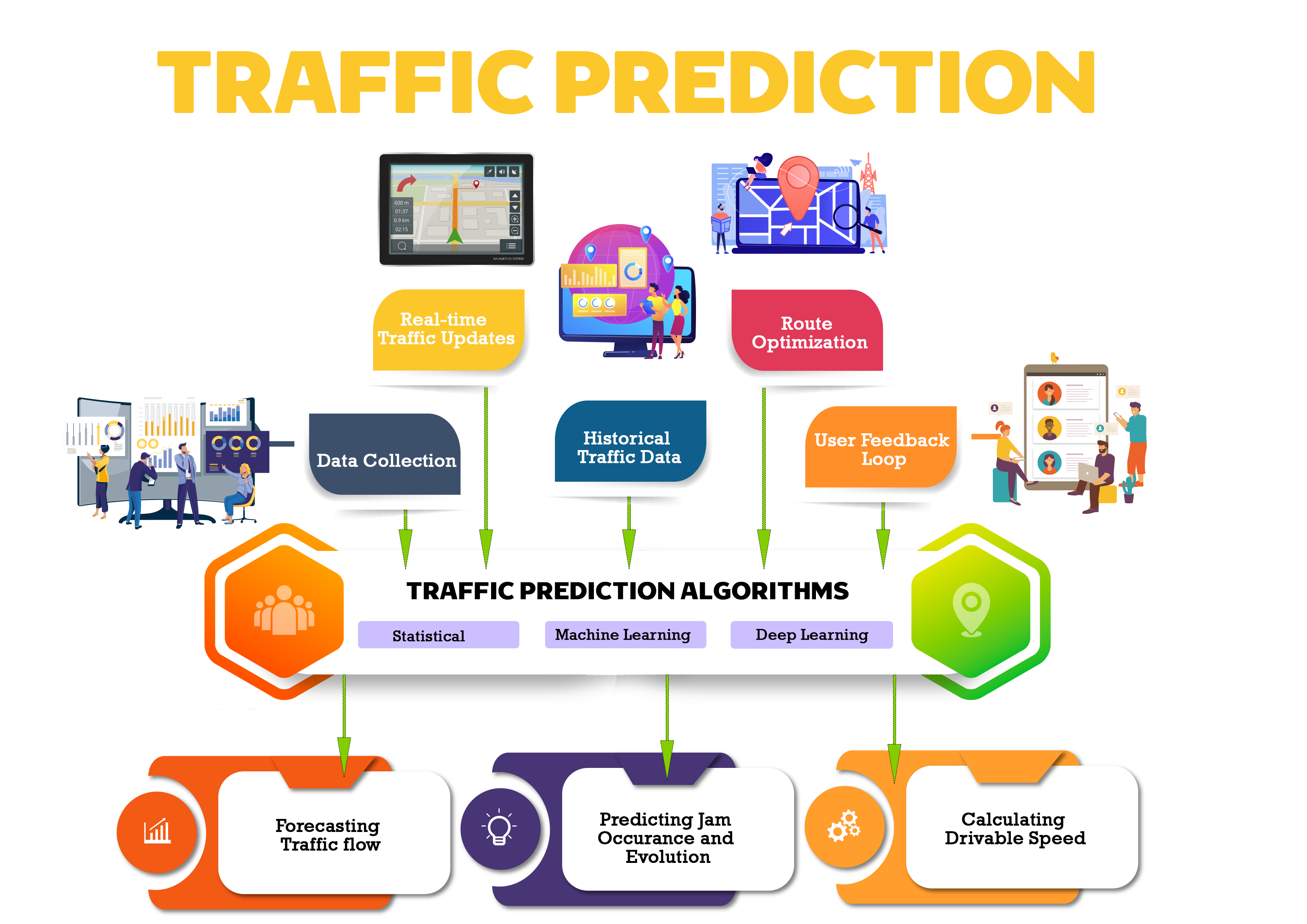Predict traffic and determine routes using Google Maps
Behind the scenes, Google Maps uses a combination of real-time data, historical data, and sophisticated algorithms to predict traffic conditions and determine the best routes for its users. Here’s a general overview of the process:
Data Collection:
Google Maps collects a vast amount of data from various sources to understand traffic patterns. This includes data from users who have opted to share their location and movement data, data from GPS-enabled devices, and data from other sources like government transportation agencies and commercial data providers.
Real-time Traffic Updates:
Google Maps receives real-time traffic information from multiple sources, including anonymized location data from users who have enabled the “location sharing” feature on their mobile devices. By analyzing the movement and speed of these devices, Google can estimate the traffic flow on different roads and highways.
In industrial and technology revolutions, lot of jobs are going to create, only thing is to be ready to adoptable and upscaling their skills.
Historical Traffic Data:
Google Maps also relies on historical traffic data to understand typical traffic patterns during specific times of the day, days of the week, and even seasons. This information helps in predicting future traffic conditions based on historical trends.
Machine Learning Algorithms:
Google Maps utilizes machine learning algorithms to analyze the collected data and make predictions. These algorithms consider various factors, such as current and historical traffic conditions, road closures, accidents, events, and construction activities.
Traffic Prediction:
Based on the collected data and machine learning models, Google Maps predicts future traffic conditions. It can estimate how traffic will evolve throughout the day and identify congested areas or potential traffic jams.
Route Optimization:
To determine the best routes, Google Maps considers multiple factors, including real-time and predicted traffic conditions, distance, speed limits, road types, and historical data.

The algorithms calculate different route options and evaluate them based on these factors, ultimately suggesting the fastest or most efficient route to the user.
User Feedback Loop:
Google Maps continuously collects feedback from users to validate and improve its traffic predictions. Users can report accidents, road closures, or other incidents, which helps Google refine its data and algorithms to provide more accurate and up-to-date information.
It’s important to note that while Google Maps strives to provide accurate traffic predictions and route suggestions, unforeseen events or rapidly changing conditions can sometimes lead to deviations from the predicted information. Additionally, the specific details of Google Maps’ algorithms and data sources are proprietary information and not publicly disclosed by Google.
For further assistance, visit our channel and refer the video named Behind the scenes to predict traffic and determine routes | Google Maps or click the link.



Your article helped me a lot, is there any more related content? Thanks!
Thank you, your article surprised me, there is such an excellent point of view. Thank you for sharing, I learned a lot.
Thanks for sharing. I read many of your blog posts, cool, your blog is very good.